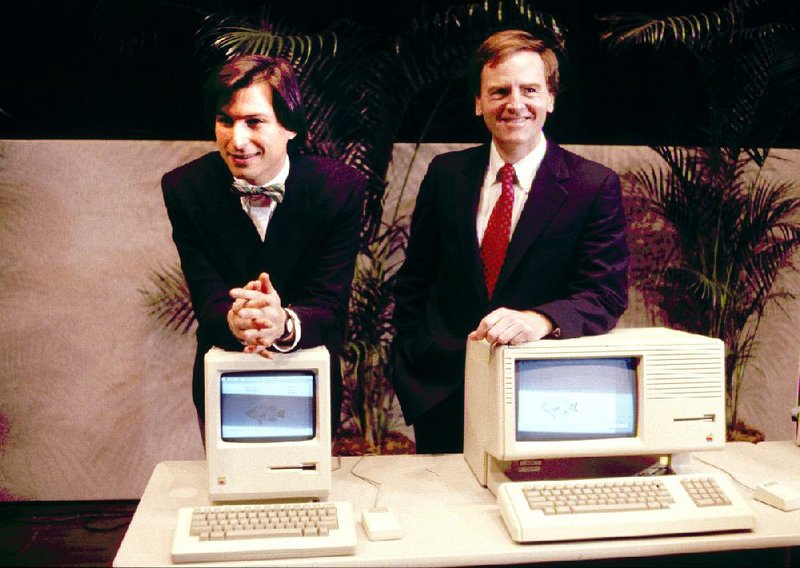NEW YORK - The Mac computer is 30 years old this month, and its legacy is obvious. Many of the electronic gadgets available today drew inspiration from the original Mac.
Computers in the early 1980s typically required people to type in commands. With the Mac, users could instead navigate with a graphical user interface. Available options were organized into menus. Users clicked icons to run programs and dragged and dropped files to move them.
The Mac introduced realworld metaphors such as using a trash can to delete files.It brought us fonts and other tools once limited to professional printers. Most importantly, it made computing and publishing easy enough for everyday people to learn and use.
Apple sparked a revolution in computing with the Mac. In turn, that sparked a revolution in publishing as people began creating fancy newsletters, brochures and other publications from their desktops.
Those concepts are so fundamental today that it’s hard to imagine a time when they existed only in research labs - primarily Xerox’s Palo Alto Research Center in California. Apple co-founder Steve Jobs and his team got much of its inspiration from the facility, which they visited while designing the Mac.
The Mac has had “incredible influence on pretty much everybody’s lives all over the world since computers are now so ubiquitous,” said Brad Myers, a professor at Carnegie Mellon University’s Human-Computer Interaction Institute. “Pretty much all consumer electronics are adopting all of the same kinds of interactions.”
Apple didn’t invent those tools, nor was the Mac the first to use them. Xerox Corp. sold its own mouse-based Star computer, and Apple’s Lisa beat the Mac by months. It’s impossible to say what would have happened if those machines hadn’t flopped with consumers or whether others would have come along if the Mac hadn’t.
But the Mac prevailed and influenced generations of gadgets that followed.
The Mac owes much of its success to the way Apple engineers adapted those pioneering concepts. For instance, Xerox Corp. used a three-button mouse in its Alto prototype computer. Apple settled on one, allowing people to keep their eyes on the screen without worrying about which button to press.
While Lisa had those improvements first, it cost about $10,000. The Mac was a “low” $2,495 when it came out Jan. 24, 1984.
Apple insisted on uniformity, so copying and pasting text and deleting files would work the same way from one application to another. That reduced the time it would take to learn a new program.
And Apple put a premium on design. Early Macs showed a happy face when they started up. Icons and windows had rounded corners. Such details made computers appear friendlier and easier to use, Myers said.
One of the first applications enabled by the Mac’s interface was desktop publishing.
Early computers generated text the way a typewriter would - character by character, one line at a time. Users had a limited number of characters with no variation in appearance. The Mac was one of the first to approach displays like a TV: Text gets incorporated into a graphic that the computer projects on the screen pixel by pixel.
With those tools, would-be publishers could change fonts, adjust typeface sizes and add attributes such as italics. They could also mix images with text. The earliest Macs popularized “what you see is what you get,” or WYSIWYG; formatting on the screen largely reflected how the page would look in print. Instead of going to a professional printer, anyone could simply design and print newsletters on a Mac.
Of course, the Mac’s success was never guaranteed.
Initially, many people “thought it was a waste of time and a gimmick,” said Dag Spicer, senior curator of the Computer History Museum in Silicon Valley.
He said longtime computer users already knew how to perform computing tasks “very efficiently with just two or three keystrokes. It might have been more efficient for them than to use a mouse.”
The Mac didn’t run software for the company’s Apple II computer, so there was little people could do with it until Aldus - now part of Adobe - released PageMaker publishing software in 1985. The original Mac had little memory and a small screen, and it lacked a hard drive. Although the Mac’s processor was fast for its time, much of that power went to the graphical interface instead of tasks common for research and commerce.
With the Mac came “the dawn of the notion of we can waste computing power to make it easier for people,” said Jim Morris, who worked on the Xerox Alto before joining Carnegie Mellon by the time the Mac came out. “The Macintosh was not a business machine.”
Tim Bajarin, a Creative Strategies analyst who has followed Apple for more than three decades, said he was baffled, yet intrigued, when he saw the Mac’s unveiling at an Apple shareholders meeting in 1984.
“This really was a complete departure from the computing that we knew,” he said. “None of us had any clue what its potential would be.”
Business, Pages 19 on 01/27/2014
